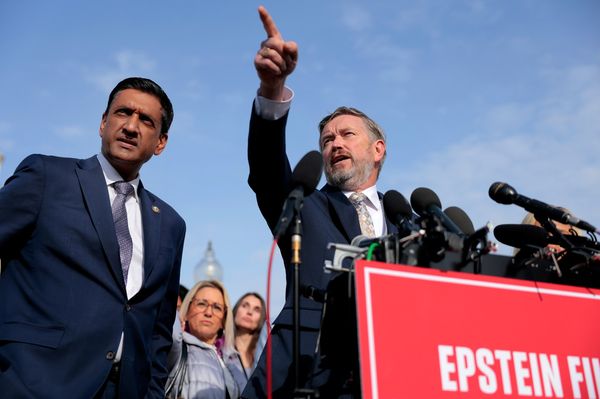
Prime Minister Keir Starmer was forced to make changes to his top team by Angela Rayner’s resignation amid a stamp duty scandal, but has ended up using the opportunity to implement a major reshuffle at No 10 too. Key roles have been handed out to ministers on Labour’s right flank, who have been tasked with implementing phase two of the Labour government’s “plan for change”: “delivery, delivery, delivery”.
According to No 10, phase one – fixing the foundations – is complete. It can now move beyond repairing the wreckage left by the Conservatives and onto delivering core policy goals. In shifting focus, Starmer’s hope is that the government can convincingly demonstrate “real change” to the electorate in time for the next election. But he is also aiming to consolidate his team’s grip over the government machine.
A low-profile but highly significant decision has been taken to move Darren Jones from his role in the Treasury to become the chief secretary to the prime minister. In the first cabinet meeting since the reshuffle, Jones sat two seats down from Starmer.
In this newly created role, Jones has been handed “operational oversight” of the government’s programme and will lead a new No.10 delivery unit. The unit replaces the short-lived Mission Delivery Unit, which was created when Labour first entered office. Other notable appointments to Starmer’s top office reflect his push for a more assertive approach to economic policy and a sharper communications strategy.
The reshuffle is a response to a longstanding problem facing British prime ministers: having power over decision-making with limited capacity to deliver policy. From Boris Johnson’s attack on the courts to Liz Truss’s rows with the Office for Budget Responsibility, prime ministers have long lamented the weakness of the levers available to them to execute their agenda.
In line with this, Starmer is reported to have become frustrated at how slowly decisions are implemented. He has moved forward with plans to transform the “overcautious and flabby state” by recouping powers transferred to quangos.
The latest No 10 reshuffle is largely consistent with this trajectory. The UK’s system of governance and democracy is widely regarded as one of the most centralised in the western world. And yet, in managing a wider political system characterised by incoherence, prime ministers have generally responded by hoarding power through mechanisms of internal centralisation.
Starmer’s government, for example, is planning to give the justice secretary the power to veto decisions made by the sentencing council. Similarly, new housing secretary Steve Reed promises to “build, baby, build” – seeing through on Conservative efforts to weaken challenges to the government through the courts by diluting planning regulations.
And as former policymaker Sam Freedman illustrates in his recent book Failed State, cabinet and personnel changes have become increasingly centred around loyalty to the prime minister’s agenda.
Have the foundations been fixed?
Some of Labour’s proposals to fix the foundations seek to address this problem of power without capacity. Transferring hundreds of digital services onto a single platform should make it easier for citizens to navigate public services, for example.
The creation of a delivery unit should give the centre stronger strategic infrastructure. And abolishing some quangos, such as NHS England, will reduce unnecessary administrative duplication and simplify the centre’s capacity to direct policy.

Jones’s move to No 10, as well as the hiring of several economic advisers, appears to be a welcome attempt to reassert the prime minister’s authority over the Treasury, which is widely regarded as having become too powerful.
However, despite Starmer’s claim to have successfully completed phase one, the hyper-centralised yet highly fragmented system behind the quandary of power without capacity remains firmly in tact. Central government continues to hold a monopoly over executive and legislative power, while frontline provision remains gutted by cuts to public services, a toxic dependency on outsourcing and weak local government.
In the absence of more foundational reforms to the UK’s system of governance, executive centralisation only serves to burden central government with more responsibilities which it lacks the resources to handle.
What can be done?
Many options are available to improve the capacity of the government to “deliver, deliver, deliver”. For example, Treasury monopoly power over fiscal policy might be broken up via a department for growth responsible for macroeconomic policy.
A new department for the civil service, overseen by a revamped civil service board, would bolster accountability for implementation across central government.
Policy delivery could also be boosted by strengthening local government. The 2022 Brown report, commissioned by the Labour party in opposition but ignored since entering government, provides many useful proposals along these lines. These include replacing the House of Lords with an elected chamber of nations and regions, and a transfer of greater fiscal powers to local governments to allow them to be more responsive to local needs.
In lieu of a more urgent and transformational programme to rebuild state capacity at both the central and local levels, however, the prospects for delivery during the Starmer government’s second phase look bleak.
Want more politics coverage from academic experts? Every week, we bring you informed analysis of developments in government and fact check the claims being made.
Sign up for our weekly politics newsletter, delivered every Friday.
Bradley Ward receives funding from Leverhulme Trust.
Joseph Ward has received funding from the ESRC.
This article was originally published on The Conversation. Read the original article.







